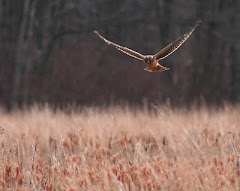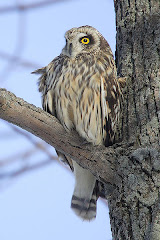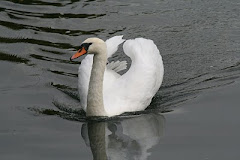
I have now experienced ‘empty nest syndrome’ three times. The first time was a double helping when our 19 year-old twins left for university. I coped pretty well despite yet another milestone in the aging process and I was confident that we had given them ‘roots to grow and wings to fly’ – which brings me to my second dose.
Thanks to an inspired Christmas present, 2011 had been the best year so far for owl watching. By the time I got around to fitting my new nest box camera some of our nest boxes were already occupied so, rather than disturb any early home-makers, I decided to fit the camera in the roof space of the garage. There it could cover the hole in the wall, the entrance to the owl box and a number of the roof beams and would feed its signal to a redundant analogue television in the stable next to the garage. At this stage I didn’t know if our resident barn owls had even survived what had been one of the worst winters for decades.
That they had survived became clear during one of my frequent visits to the stable in early March when I witnessed something I had only ever read about. There they were, both adults sitting on a beam in front of the camera engaged in what the Barn Owl Trust describes as ‘mutual preening and cheek rubbing’ - classic barn owl courtship.
Throughout the warm, dry April there were no more sightings, but we kept our fingers crossed that they had mated successfully. By the end of April it was apparent that there were young owls in the box as both parents made frequent hunting trips into the surrounding fields. I even managed a superbly composed photograph of one of them flying over my head with a vole in its talons – superbly composed but hopelessly out of focus!
Unable to see what was going on inside the nest box I began to wish I had put the camera there. Young barn owls, unlike most other nestlings, run, jump, pounce and ‘play’ like kittens from about three weeks old and I was missing all of this, but it wasn’t long before I was rewarded with some fantastic TV footage of their next stage of development. Towards the end of June two heart shaped faces started to peer out of the box and on the 1st July one of them took a metaphorical first step. After nearly an hour of false starts, like a child on the high diving board, it hopped from the nest box entrance to the nearest beam, about two feet away. The second one was not so lucky. More hesitant even than the first and much more ungainly it capped its equally lengthy period of preparation by falling like a stone whilst attempting the same manoeuvre.
There followed an hour or so of worry as I tried to decide what I should do. I was aware that adults will not feed young owls if they fall from the nest so should I contact the barn owl trust or a local wildlife rescue centre, or should I climb up and try to return it to the nest box?. This would not be easy as it had not fallen not to the ground but to the layer of carpet underlay covering the beams at ceiling level across the whole of the garage. I was dreading trying to capture an active young owl hopping around a surface that would not hold my weight.
As the clumsy creature was now out of range of the camera I decided to find out exactly where it was before deciding what to do. I put the ladder through the opening, climbed up and looked all around. For the first time in years I was delighted not to see an owl. While I had been vacillating the subject of my concern must have somehow managed to find its way back to safety.
During some evenings the quality of the television pictures was so poor at low light levels that it was difficult to distinguish between the parents and the youngsters. The parents were in and out of the roof space and their offspring were in and out of the nest box, hopping from beam to beam and in and out of the view of the camera. Eventually, when we briefly saw five owls, we realised that there were three youngsters, not two.
They soon made their first foray into the outside world and throughout July we were privileged to be able to watch three owlets develop into fully fledged confident fliers. We watched their practice flights from tree to tree, from our granddaughter’s swing to the picnic bench and from the garage roof to the wall. As the light was fading one evening I was mesmerised as one of them pounced over and over again on something on the ground. I thought at first its leg was tangled in string and it couldn’t take off properly, but my worries were short-lived once my eyes became accustomed to the light. It was pouncing on a short poplar twig with a couple of leaves attached, using play as preparation for independence - it would soon have to hunt its own food.We returned from a week’s holiday in early August and the young owls had gone. We had no more views of them and their parents had returned to hunting in the dark, so we didn’t see them either. We were left with a feeling of emptiness, literally an ‘empty nest’ syndrome. And what about my third dose? That was when our granddaughter moved away, but that’s another story.


















.jpg)
























No comments:
Post a Comment